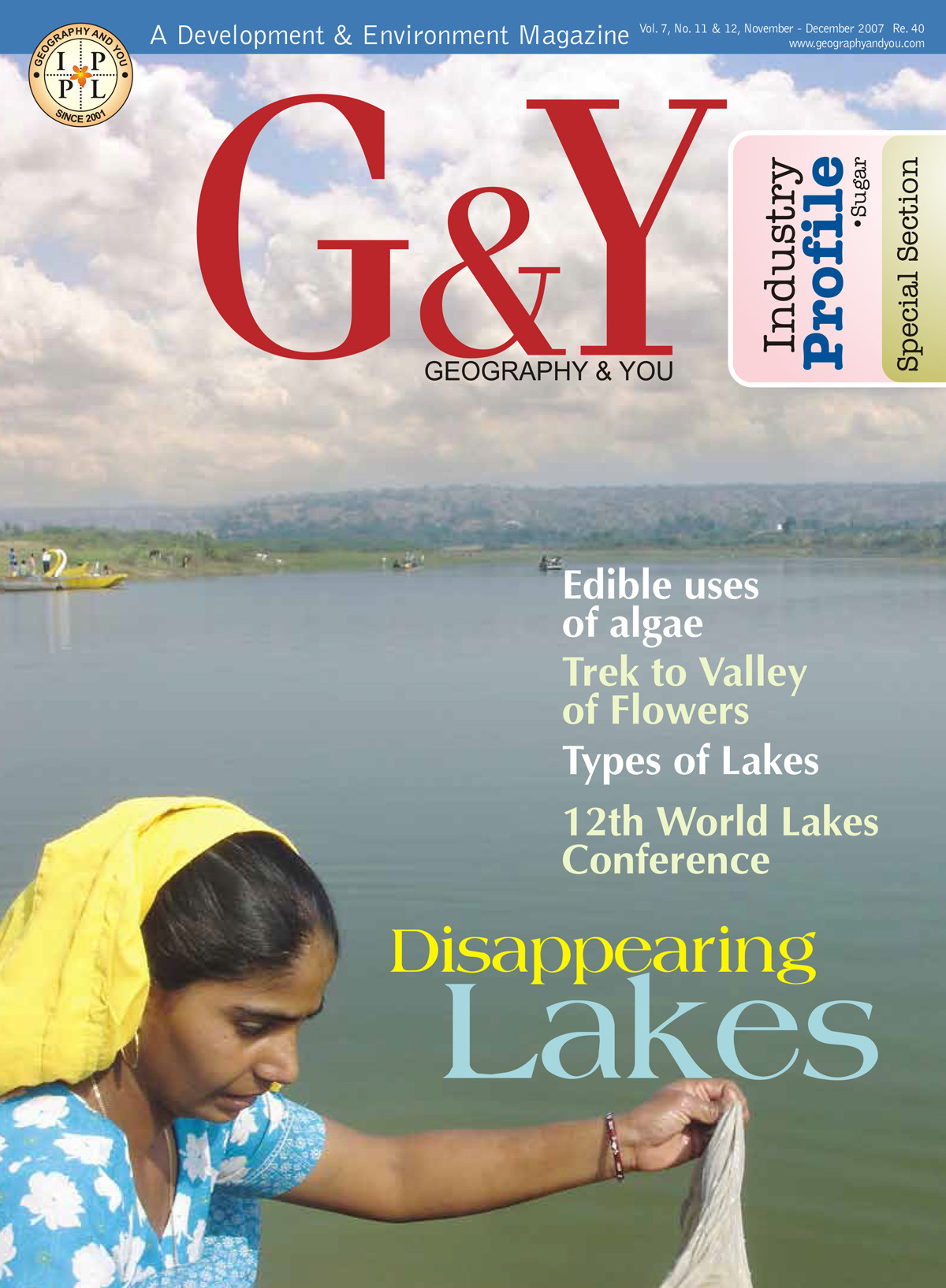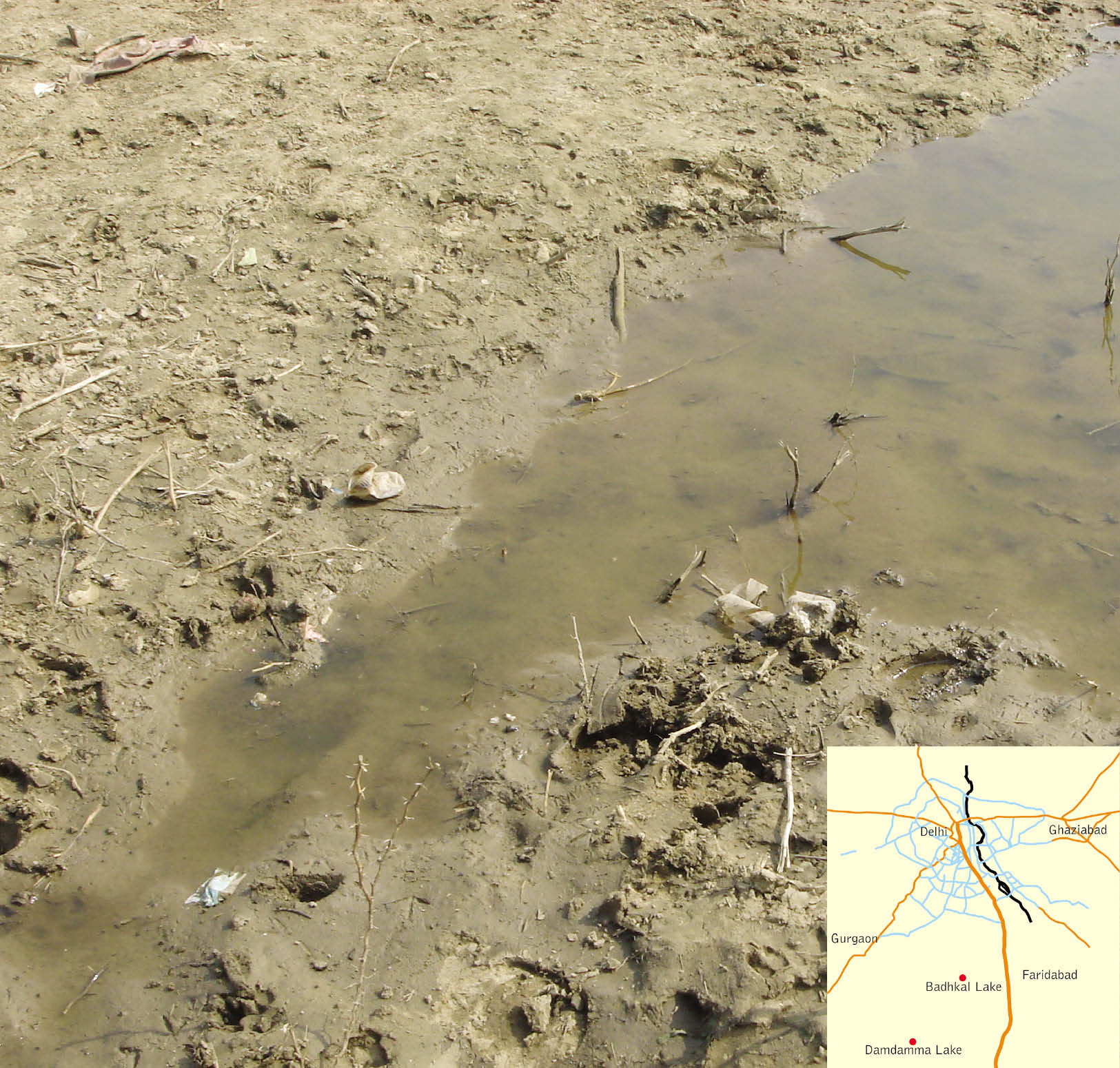
Inside this issue
First Report
I shut my eyes, there it was, it’s clear waters rippling around my ankles, as I idled away on the fisherman’s oblong boat. But alas, my twitching nose, detecting the veritable stink of decayed vegetation, broke my reverie and landed me on a muddy bank. Where was the water, I gasped, as I stared at the remnant limbs of one of the most beautiful lakes, Damdamma, upon the shores of whom, many years ago, I had found true love. Alarmed, upset and indignant I began my search – to prove this drastic decline with data, and shake everybody up to stop this unwarranted disappearing act.
Concept Counter
Pollution Hotspots
As a part of environmental management programme, the Central Pollution Control Board (CPCB), New Delhi, has identified 24 problem areas in the country where environmental pollution is critical.
Anyone who has walked over slippery rocks along limped pools will be aware of group of organisms known as algae. Algae are simplest photosynthetic plants dwelling in water.
Traveller's Diary
Valley of Flowers had been eluding us for many years, owing primarily to the best time recommended for visit, which is July 15 to August 15 - just when school/college terms have begun.
The mesmerising land called India, unsurpassed in natural and man made creations, provides opportunities of exploration, singularly pristine. Lakes, perhaps a lesser diva to the gushing rivers, are waiting in the wings to pirouette before you, allow its blue waters to ripple against your ankle and hold your attention for a little while longer, before untold pollution and damage tarnishes their beauty forever.
Lakes and wetlands possess the capability to moderate floods and droughts by retaining surface runoffs and enabling groundwater recharge. It also acts as silt traps which fuel the aquatic ecosystem with fresh nutrients. The carbon sequestration by lakes and wetlands regulate global climate and wetlands serve as both sink and source of greenhouse gas emissions.
Reports
India’s rank slips by two places from 2006 Human Development Indicator (HDI). The Report asserts that although large scale anomalies gain international recognition, many local climatic disasters goes unreported.
Human civilisation has been based on the systematic and controlled use of fire. Raging fires can wreak havoc on fragile ecosystems and destroy all that comes in its path, including precious life.
Renewable Energy
The Great Trigonometrical Survey were spread over 1,600 miles in length along the meridian and, at places, 1,200 miles in latitude, in order to cover the entire country. This work took approximately fifty years to complete and is hailed as one of the most stupendous works in the history of science.
There are ways you can contribute to the environment even as you stand in the kitchen. Rather than throw the banana peels or spinach stems or other biodegradable waste into the dustbin, you could toss them into the Compact Biogas Plant to create pollution free methane gas and in effect, help conserve planet earth’s depleting fossil fuels.

